






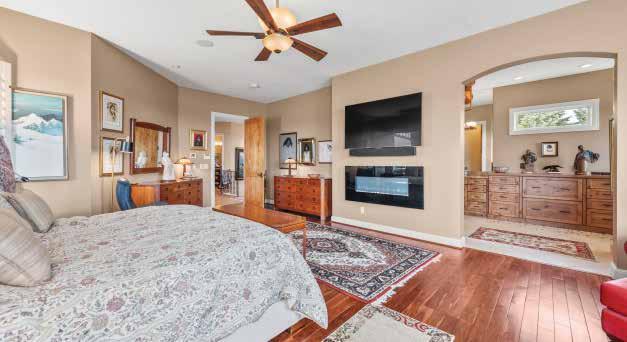























Sellers took a step back from the housing market in August in response to slow demand from cash-strapped home shoppers, according to the latest market report from Zillow.
Buyers still in the market have plenty of opportunity, especially in areas seeing inventory hold strong. But competitive momentum that has been swinging fast in buyers’ favor in recent months is showing signs of stopping nationwide.
“Buyers who can afford a home and have been waiting for the right moment should look closely at what’s available now,” said Zillow Senior Economist Kara Ng. “Options are on the shelves, even if they’re not all fresh. Sidelined buyers should revisit their budget; mortgage rates are lower than recent years, and in some markets, sellers are more willing to deal. But don’t expect this window of opportunity to stay open indefinitely. Buyers’ leverage is easing as many sellers put their plans to list on hold.”
MARKET DYNAMICS:
Sellers respond to cautious buyers
High housing costs continue to sideline many prospective buyers, making it easier for those still in the hunt. Zillow’s market heat index shows the market is balanced between buyers and sellers nationwide, with less competition among buyers than in any August since 2018.
As a result, home value appreciation has slowed to a standstill. Typical home value growth nationwide measured by Zillow’s Home Value Index is now flat over the past year — the secondslowest annual growth of any month since the start of 2018.
Listings are taking longer to sell, too.
The typical home sold in August took 27 days to find a buyer — a full week longer than last year and one day longer than pre-pandemic norms. But contrary to typical seasonal trends, competition ticked back up slightly in late summer.
Homeowners have responded to buyers’ caution by pushing pause on listing plans. New listings from sellers reached a record low for August in Zillow records, and the 7.3% month-over-month drop in new listings is steeper than normal for this time of year.
Potential sellers are probably comfortable with their home for the present, likely enjoying a low mortgage rate and significant equity growth: Typical home values nationwide are up 46.5% since February 2020.
According to Zillow’s latest survey of recent sellers, 37% were encouraged to sell by accepting a new job. As the labor market weakens, that could also reduce the number of homeowners needing to sell. This slowdown in new listing activity caused overall inventory
levels to shrink, falling 1.3% from their July peak.
REGIONAL DIVIDES:
A tale of two markets
National trends mask significant regional differences, where shifts in supply have impacted competition.
Buyer-friendly markets: Buyers have the most leverage in the South. Former pandemic-era hot spots such as Miami; Tampa, Fla.; Jacksonville, Fla. and Austin, Texas now all have more existing options on the market than before the pandemic, thanks in part to builders’ efforts to meet demand.
Seattle has made a surprising transition from favoring sellers to buyers over the past year — inventory that has risen 22% over that time played a key role.
Seller-friendly markets: The Northeast and the San Francisco Bay Area remain firmly in favor of sellers. Competition is strongest in Buffalo, N.Y.; Hartford, Conn.; San Francisco; San Jose, Calif. and Boston. In these supplyconstrained regions, inventory remains far below pre-pandemic averages, keeping the market tilted toward sellers.
This report is a monthly overview of the national and local real estate markets. The report is compiled by Zillow Research. For more information, visit zillow.com/research.

BY JUSTIN HERMES, HOST OF REAL ESTATE REALITIES & BROKER OWNER AT THE PROPERTY GROUP
This has undoubtedly been a heavy time for our nation, with the recent events surrounding Charlie Kirk and the 24th anniversary of Sept. 11 weighing on our hearts. In times like these, it is important to pause, reflect, and give thanks for the blessings we enjoy as Americans. President Ronald Reagan once reminded us, “All great change in America begins at the dinner table.” That simple truth underscores the importance of family, community, and the homes we are fortunate enough to gather in.
Gratitude for modern comforts
The American Dream is alive and well, with homeownership at a 10-year
high. Beyond the statistics, the everyday conveniences of life in the United States are remarkable. With a touch of a hand, we access clean drinking water, instant electricity, climate-controlled homes and high-speed internet. Added to this is the peace of mind that comes from knowing our first responders stand ready to keep us safe. Together, these blessings remind us that America remains a uniquely special place to live.
A nation committed to homeownership Few countries in the world provide such widespread and attainable mortgage opportunities as the United
States. From the Great Depression to the present day, programs have been designed to help more families achieve the dream of owning a home.
• The GI Bill (1944): Signed into law by President Franklin D. Roosevelt, it offered veterans federally guaranteed mortgages with no down payment. Since its inception, VA loans have helped more than 24 million veterans become homeowners.
• The FHA Loan Program (1934): Introduced as America emerged from the Depression, this initiative made affordable mortgages accessible to working families and continues to do so today.
• 30-Year Fixed Mortgages: America is one of the few nations offering this stable financing option, along with refinancing opportunities that provide predictability and peace of mind to homeowners.
These policies reflect a deep national commitment to ensuring that the dream of homeownership is not reserved for the few but extended to as many Americans as possible. President John F. Kennedy captured this vision when he said, “The right to a good home is one of the noblest motives in the American way of life — it is inherent in the heart and soul of every
American and is the cornerstone of all public policy.”
The holiday season and the gift of home
As we approach the holiday season, let us remember how truly special the American Dream is. A home is more than four walls — it is a place to gather with loved ones, to create cherished memories and to build a future.
The promise of homeownership is a cornerstone of our national identity. May it continue to expand so that more Americans each year can experience the pride, stability and joy of owning a home.


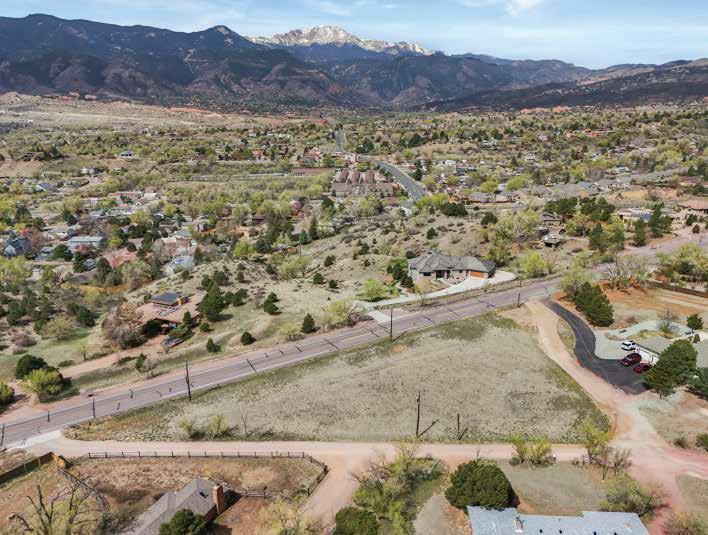
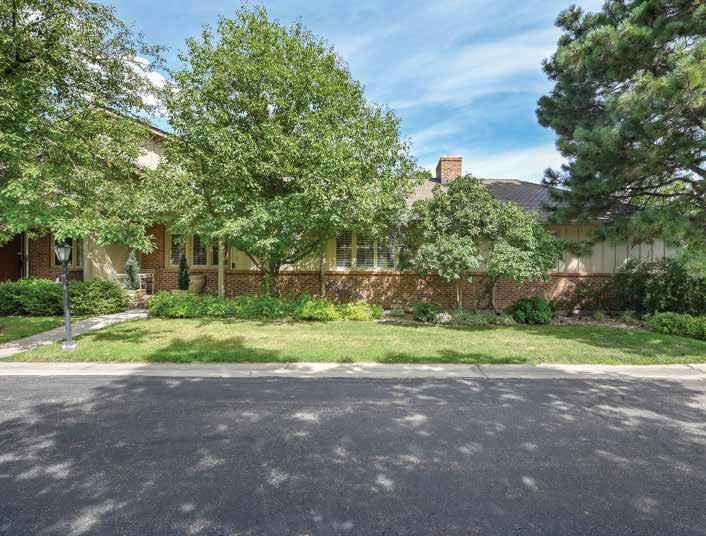
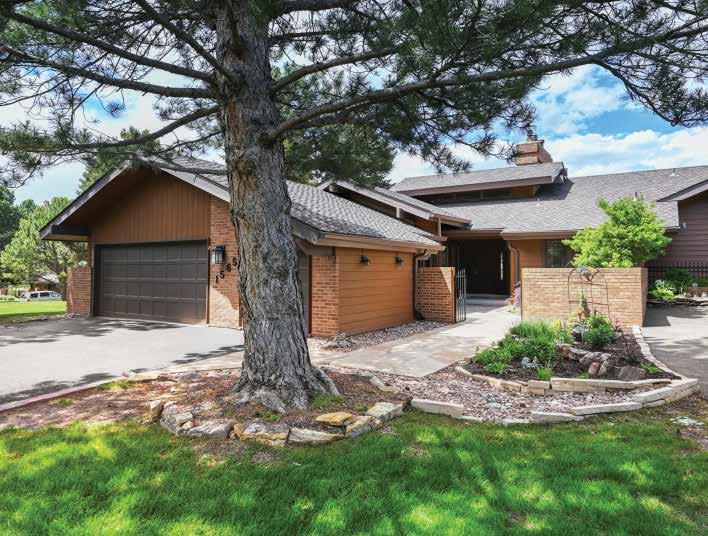
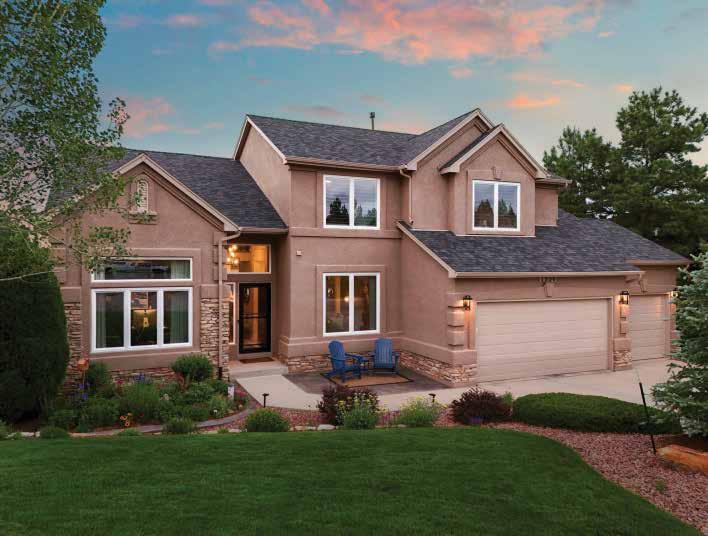

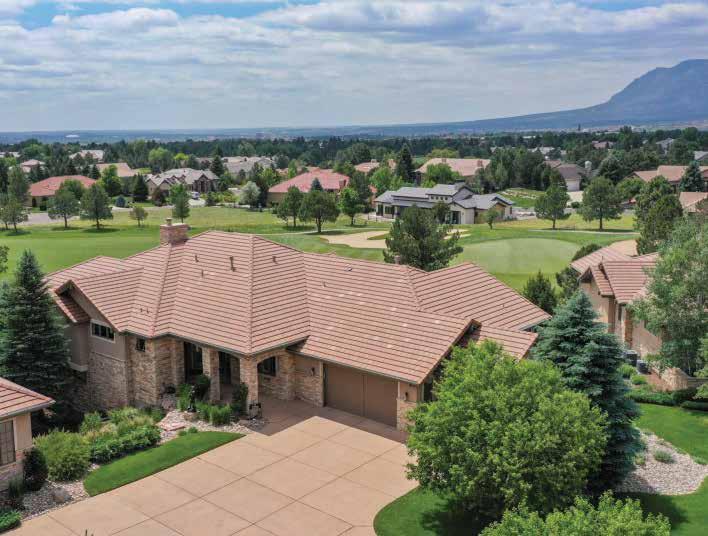


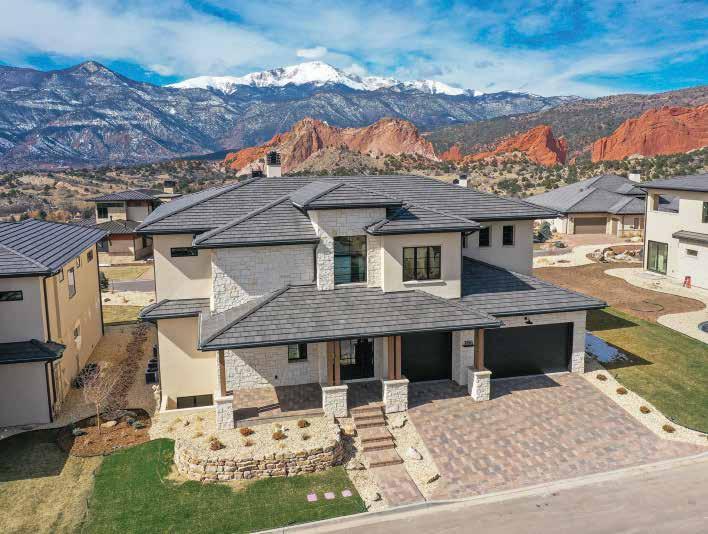



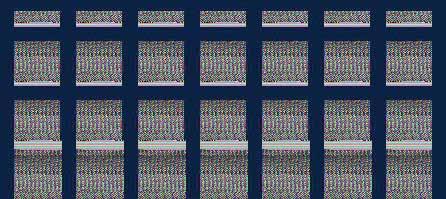

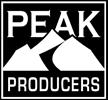




October 12-18 marks the best time to buy a home
The best time to buy a home in 2025 is fast approaching. According to the Realtor.com 2025 Best Time to Buy Report, the week of October 12–18 will be the year’s sweet spot for home shoppers, with a rare combination of higher inventory (32.6% more active listings from the start of the year), lower prices (a potential savings of $15,000), and less competition (30.6% lower) that makes it advantageous for buyers.
“After years of constrained conditions, the 2025 housing market is giving buyers something they haven’t had in a long time: options,” said Danielle Hale, chief economist, Realtor.com. “I expect this market momentum shift to magnify typical seasonal trends that favor homebuyers in the fall. During the week of October 12–18, data suggests that buyers will find more

other shoppers, and potential average savings of more than $15,000 compared to this summer’s peak prices. In a year that’s been the most buyer-friendly in nearly a decade, it’s the best window of opportunity for homebuyers all year.”
For the first time in years, the housing market is showing signs of balance, creating a rare opportunity for buyers including:
• Plentiful listings: Inventory levels typically peak in the early fall, and this year, they have reached the highest point since before the pandemic even before the season cools. Buyers during the best week can expect up to 32.6% more active listings than at the start of the year, offering more options to find the right fit.
• Less competition: Buyer demand has cooled in 2025 due to affordability challenges and elevated mortgage rates. Historically, competition is 30.6% lower than peak season during this week, giving buyers more breathing room and reducing pressure to make rushed decisions.
• A more manageable market pace: Homes are taking longer to sell, with the U.S. median time on market surpassing pre-pandemic norms this
Transforming your indoor space into a lush, green sanctuary starts with bringing in a bit of the outdoors by introducing houseplants to your living area. Once inside, though, it is important to properly care for them to keep your indoor garden thriving.
Understand light requirements
Light is a crucial element for indoor plant health. Different plants have varying light needs, and understanding these requirements is key to their survival. Low-light plants, such as snake plants and cast-iron plants, can thrive in areas with minimal natural light. Medium-light plants, like spider plants and ferns, prefer indirect sunlight and can be placed near windows with sheer curtains. High-light plants, including succulents and cacti, need direct sunlight for optimal growth.
Water indoor plants correctly
It is important to understand the specific watering needs of each plant. Typically, it is best to let the top inch of soil dry out between waterings.
Remember, it is better to underwater than overwater, as most plants can
recover more easily from slight dehydration than root rot. Consider using a moisture meter to accurately assess when your plants need water.
Choose the right pot and soil
When choosing a pot, ensure it is slightly larger than the plant’s current root system to allow for growth and features drainage holes to allow excess water to escape. Most indoor plants thrive in a well-draining potting mix that retains some moisture but doesn’t become waterlogged. Specialty mixes are also available for specific plant types and can provide the ideal growing environment.
Deal with common problems
Even with the best care, plants can encounter problems. Common issues include pests like spider mites and aphids, which can be managed with natural insecticidal soap or neem oil. Yellowing leaves can indicate overwatering while brown leaf tips often signal underwatering or low humidity.
Research the specific needs of your plant species for best results.
summer. In October, homes typically spend two weeks longer on the market compared to peak season, meaning sellers may be more open to negotiation.
• Lower prices: Nationally, listing prices during the best week are on average 3.4% below seasonal peaks, translating to potential savings of over $15,000 on a median-priced home of $439,450.
• More price reductions: October historically marks one of the top periods for price cuts, with about 5.5% of homes seeing reductions that week. Recent trends suggest 2025 could see even more discounted listings.
• Fresh listings: Despite slower-thanusual seller activity overall in the fall, mid-October consistently has enough fresh listings to outpace conditions at the start of the year — historically 15.7% more — giving buyers additional opportunities to find homes that match their priorities.
The 2025 housing market has slowed compared to recent years, allowing inventory to accumulate and giving buyers more leverage. Active listings climbed above 1 million in late spring, a milestone not seen in years, and time on market has normalized to pre-pandemic levels. Elevated mortgage rates and stronger rental alternatives have kept
some buyers on the sidelines, further reducing competition.
“While the market has not yet tipped into a full ‘buyer’s market,’ conditions are more balanced than they have been in years,” said Hale. “This represents a significant shift after a period of historically tight supply and intense competition that left many home shoppers priced out.”
REGIONAL HIGHLIGHTS
The national “best week” of October 12–18 applies to many metro areas, but local markets show some variation:
• Earlier best weeks: New York, Philadelphia, Chicago, Atlanta and Dallas all see buyer-friendly conditions a few weeks earlier, often in September.
• Aligned with national timing: Large metros like Houston, Los Angeles and Washington, D.C. mirror the national October timing.
• Later best weeks: Florida markets, including Miami and Tampa, peak as late as December.
Across the 50 largest metros, 45 experience their best time to buy within a month of the national week. In metros aligned with October 12–18, buyers can expect 20.9% more listings, 37.3% less competition, and home prices 6.8% below peak levels compared to earlier in the year.
Realtor.com analyzed six supply and demand metrics at a national and metropolitan level that follow seasonal patterns, using data for 2018-2024 period (2020 data was omitted due to anomalies caused by the pandemic). Those metrics analyzed include: 1) listing prices, 2) inventory levels, 3) new “fresh” listings, 4) time on market, 5) homebuyer demand (Realtor.com views per property) and 6) price reductions. Interest rates, which do not follow seasonal patterns, were not included.
Each week of the year was scored from 0 to 100 based on the number of active listings. A given week scored highly if it had more listings compared to other weeks of the year. The other metrics were scored in the same way, such that each week had six different scores for active listings, new listings, listing prices, days on market, price reductions and views per property. (In the case of prices, lower prices score higher. Same with views per property). Each week was then ranked by the average of those scores. The week with the highest composite score was considered the best time to buy. This week represents a balanced view of market conditions favorable for buyers.

•
•
•
•
•
•
•
•
•
•
•
•
•
•
•
•
80910
• 826
80911
•
•
•
•
•
•
•
•
•
•
$353,000
Crandall Drive $430,000
• 4045 Manzana Court $446,000
• 4855 Spokane Way $550,000
• 5314 Barnstormers Ave. $577,000
80915
• 5102 Galley Road, Lot 220B $117,000
• 1435 Commanchero
•
80906
•
80907
•
•
•
•
•
•
• 8460 Sutterfield Drive $558,000
• 2050 Bramblwood Lane
$620,000
• 2845 Dynamic Drive $649,900
• 7853 Antelope Valley Point
$1,281,000
80921
• 10502 Hudson Yard Drive
$150,000
• 1939 Wildwood Pass Drive
$459,900
• 11434 Wildwood Ridge Drive
$525,000
• 824 Deschutes Drive $545,000
• 326 All Sky Drive $614,000
• 655 Rembrandt Court $635,000
• 15230 Ridgefield Lane $775,000
• 14015 Gleneagle Drive
$1,150,000
80916 •
• 2263 Cabernet Court $1,150,000
• 1656 Goldpeak Court $1,199,000
• 14040 Shadow Pines Road
$4,360,000
80922
• 7105 Ash Creek Heights, Apt. 204 $290,000
• 4610 Crow
80917
80918
80909
•
•
•
•
•
80925
•
•
•
•
80924
•
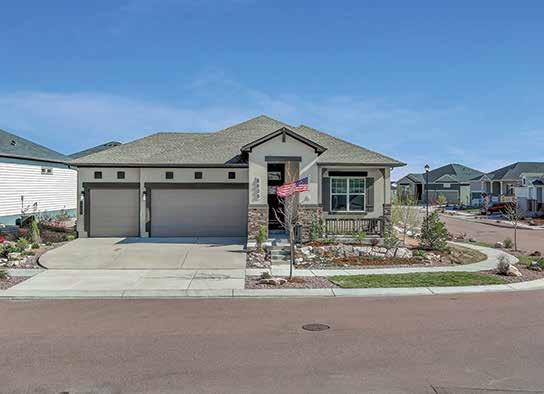




First American Data & Analytics, a leading national provider of propertycentric information, risk management and valuation solutions and a division of First American Financial Corporation, recently released its August 2025 Home Price Index report. The report tracks home price changes less than four weeks behind real time at the national, state and metropolitan (Core-Based Statistical Area) levels and includes metropolitan price tiers that segment sale transactions into starter, mid and luxury tiers.
AUGUST NATIONAL HOUSE PRICE INDEX FIRST AMERICAN DATA & ANALYTICS’ NATIONAL NON-SEASONALLY ADJUSTED (NSA) HPI
Metric Change in HPI
July–August (month over month) -0.2%
August 2024–August 2025 (year over year) +1.2%
Highlights
• Annual house price appreciation is at the slowest rate since February 2012.
• House price growth reported in last month’s HPI for June 2025 to July 2025 was revised down by 0.1 percentage points, from -0.2% to -0.3%.
“House price growth nationally slowed further in August, dropping to the slowest pace since 2012 and signaling a shift toward a more balanced market after the rapid price acceleration during the pandemic,” said Mark Fleming, chief economist at First American. “For prospective buyers, this slowdown offers a welcome breather as incomes outpace house price growth and mortgage rates ease to their lowest level of the year. At the same time, homeowners still have record levels of equity — cumulative price appreciation since early 2020 is still up 56%. The result is more opportunities for buyers to get in the market, especially existing homeowners looking to tap their significant equity gains.”
August 2025 Local Market
Price Tier Highlights
The First American Data & Analytics
HPI segments home price changes at the metropolitan level into three price tiers based on local market sales data: starter tier, which represents home sales prices at the bottom third of the market price distribution; mid-tier, which represents home sales prices in the middle third of the market price distribution; and the luxury tier, which represents home sales prices in the top third of the market price distribution.
“Affordability constraints are shaping price dynamics across market segments,” said Fleming. “When averaging across the top 30 markets we track, annual price growth has been softest in the starter-home tier, while
the luxury segment has outperformed. In an environment where higher mortgage rates weigh heavily on first-time buyers, luxury buyers — often less affected by the rate ‘lock-in’ effect because they can pay in cash or leverage equity from a previous home sale — are driving stronger appreciation at the top end of the market.”
HPI data for all 50 states and the largest 30 CBSAs by population is available at dna.firstam.com/insightscenter/home-price-index-hpi-reports.
Methodology
The report measures single-family home prices, including distressed sales, with indices updated monthly beginning in 1980 through the month of the current report. HPI data is provided at the national, state and CBSA levels and includes preliminary index estimates for the month prior to the report (i.e. the preliminary result of July transactions is reported in August). The most recent index results are subject to revision as data from more transactions become available.
The HPI uses a repeat-sales methodology, which measures price changes for the same property over time using more than 46 million paired transactions to generate the indices. In non-disclosure states, the HPI utilizes a combination of public sales records, MLS sold and active listings, and appraisal data to estimate house prices. This approach is particularly effective in areas where there is limited availability of accurate sale prices, such as non-disclosure states.
2
the amounts of $23,873.54 (for Phase 2) and $40,855.12 (for Phase 3) of the Banning Lewis Ranch Parkway Landscape Projects at the offices of the District Manager: CliftonLarsonAllen LLP, 121 South Tejon Street, Suite
Ranch. Any person, co-partnership, association of persons, company or corporation that has furnished labor, materials, provisions, or other supplies used or consumed by such contractor or its subcontractors in or about the performance of the work contracted to be done, and whose claim therefor has not been paid by the contractor or its subcontractors is required, at any time up to and including the time of final settlement for the work contracted to be done, to file a verified statement of the amount due and unpaid on account of such claim. Said verified statement must be filed with the Banning Lewis Ranch Regional Metropolitan District No. 2, Attn: Korben Heim, at the above address for the District at or before the time and date hereinabove shown. Failure on the part of any claimant to file such verified statement of claim prior to such final settlement will release said District, its Board of Directors, officers, agents and employees, of and from any and all liability for such claim. BY ORDER OF THE BOARD OF DIRECTORS Banning Lewis Ranch Regional Metropolitan District No. 2 By: Lisa K. Mayers, Attorney for the District Published in The Gazette September 20 & 21, 2025.

PR NEWSWIRE
Rent prices fell year over year for the 25th consecutive month in August, while also registering the first month-over-month drop since March, signaling the expected seasonal slowdown heading into the fall. Meanwhile, more than two years of declining rents are sparking moving plans for many renters to gain space, save money or explore a new area.
In August, asking monthly rents dipped by $38 (-2.2%) year over year. The median asking monthly rent for 0-2 bedroom units in the 50 largest metros dropped $46 (-2.6%) to $1,713, compared with the August 2022 peak, but $249 (17.0%) higher than the pre-pandemic level, according to the Realtor.com August Monthly Rent Report.
NOW, THEREFORE, BE IT RESOLVED BY THE CITY COUNCIL OF THE CITY OF COLORADO SPRINGS: Section 1. That the City Council finds the Petition for Annexation to be in substantial compliance with Section 31-12-107(1), C.R.S. Section 2. The City Council hereby sets a public hearing on the Petition for Annexation for October 14, 2025, at 9:00 A.M., at Council Chambers, City Hall Building, 107 N. Nevada Avenue, Colorado Springs, Colorado, for purposes of determining and finding whether the area proposed to be annexed meets applicable requirements of Section 31-12-104 and Section 31-12-105, C.R.S. and Section 30 of Article II of the Colorado Constitution, to determine the eligibility of the area for annexation and to determine whether the

file a written response to that Petition. a) You may use form JDF 1420 – Response to the Petition.
b) Forms and resources are found online at www.courts.state.co.us/Forms/family. c) Your response is due within 21 days of receiving this summons. Note! That deadline extends to 35 days when served outside of Coloraso or if notified of the case by publication.
d) File online at www.jbits.courts.state. co.us/efiling. Or, File by mail or in-person ( the Court’s address in above.
e) Include the filing fee ($116) or, File the Response by mail or in-person with a fee waiver (forms JDF 205 & JDF 206
3. Consequences If you do not file a Response, the Court may decide the case without your input. You may not receive further notice about court filings and events. You are still required to obey any orders the Court issues.
4. Automatic Court Orders (Temporary Injunction) As soon as you receive this Summons, you must obey these orders.
a) Do not disturb the peace of the other parent or parties in this case.
b) So not take the children in this case of of the state without permission from the Court and/or the other parent (or party).
c) Do not stop paying, cancel, or make any changes to health, homeowner’s, renter’s, automobile, or life insurance policies that cover the children or a party in this case or that name a child or a party as a beneficiary.
Exception: You may make changes to insurance coverage if you have written permission from the other parent or party or a court order, and you give at lease 14 days’ Notice to the other party. C.R.S §§ 14-10-107, 108. You must obey these orders until this case is finalized, dismissed, or the Court change these orders. To request a change, you may use form JDF 1314-General Motion.
5) Note on Genetic Testing You can request genetic testing. The Court will not hold this request against you when deciding the outcome of the case. You must do testing and submit the results before the Court establishes who the parents are (parentage) and issues final orders. After that time, it may be too last to submit genetic testing evidence. The law that directs this process is C.R.S § 14-10124(1.5). So Summond Court Clerk, Dated
“Rental declines across the majority of markets in various-sized homes are providing new options for renters, who have been squeezed by significant increases since the pandemic,” said Danielle Hale, chief economist at Realtor.com. “As rents remain significantly higher than pre-pandemic levels, our Site Visitor Survey shows that the search for a more affordable home remains one of the top reasons to move across all age groups. This is likely a reason why we’re starting to see a modest uptick in renter mobility.”
Rent prices dropping across all unit sizes
Median rent declined across units in all size categories examined by Realtor.com. Studio rents dropped to $1,430 per month, down $25 (-1.7%) year over year; 1-bedrooms fell to $1,593, down $35 (-2.1%) year over year; and 2-bedrooms, which experienced the highest growth rate over the past six years, registered the largest declines, landing at $1,897, down $42 (-2.2%) year over year.
Greater mobility as rent pressures ease
Despite consistent year-over-year declines, median rents still remain 17.0% higher than the pre-pandemic level. To put this in perspective, this is lower than what has occurred with overall consumer prices (+26%) and with the median price-per-square foot of for-sale home listings (+51.3%) in the six years ending August 2025. With rents easing, more renters are exploring a move. When rents rose in 2021–2022, nearly 80% of renters stayed put, with mobility around 20.8%. Census data shows renter mobility edged up in 2023 (21.5%) and continued to rise in 2024 (21.6%).
Data from the Realtor.com Site Visitor Survey reveals renters are most often considering a move to gain more space, find a more affordable home or try out a new neighborhood. Markets with the largest rental price declines from their peaks, including Las Vegas (-13.6%), Atlanta (-13.6%), and Austin, Texas (-13.4%) in particular, are creating pockets of opportunity for renters looking to make a move.
Reasons for mobility vary by age, with younger and older renters more likely to move for
affordability reasons, while middle-aged renters may be looking for more space to accommodate a growing family.
“Renters focused on affordability are often willing to make compromises, like choosing a longer commute, fewer amenities or fewer on-site services,” said Jiayi Xu, economist at Realtor. com. “It shows that many households are carefully weighing costs against lifestyle, making tradeoffs to find a home that better fits their budget.”
Renters remain hopeful about ownership, but barriers persist Even as the average age of home buyers reached an all-time high of 38 years old in 2024 and many renters remain priced out of buying, optimism about ownership is strong. Nearly 60% of renters surveyed said they plan to buy a home, and of those, more than half expect to do so within the next one to two years. At the same time, barriers such as saving for a down payment, limited affordable inventory, and credit constraints remain top reasons people continue to rent.
Methodology
Rental data as of August 2025 for studio, 1-bedroom, or 2-bedroom units advertised for rent on Realtor.com. Rental units include apartments as well as private rentals (condos, townhomes, singlefamily homes). We use rental sources that reliably report data each month within the 50 largest metropolitan areas. Realtor.com began publishing regular monthly rental trends reports in October 2020 with data history stretching to March 2019. With the release of its August 2025 rent report, Realtor.com incorporated a new and improved methodology for capturing and reporting more comprehensive rental listing trends and metrics. The new methodology is expected to yield a cleaner, more representative and more consistent measurement of rental listings and trends at both the national and local level. The methodology has been adjusted to better represent the true cost of primary housing for renters.
Site visitor survey: To better understand the sentiment and experiences of buyers, sellers and renters currently in the market for homes, the Realtor.com economics team conducts a randomized survey of visitors to listing detail pages on the site, the Site Visitors Survey. Respondents are asked about the reasons they are visiting the site, how they have been engaged with the housing market and how they feel that current market conditions are affecting their behavior. The survey was first launched in the fourth quarter of 2019, and this report focuses on results reported from Summer 2023 to Summer 2025.
Surveys are administered randomly to visitors on Realtor.com. For this report, we consider only respondents who indicate that they are looking for new rental homes on Realtor.com. Weights are calculated by computing the share of survey respondents falling into categories based on age and adjusting these proportions to match the share of all visitors to Realtor.com and similar online real estate marketplaces segmented by age.
2025
Location of Sale: Dickensheets Auctioneers Manner of Auction: Online Sale Time: 9:00am – 2:00pm
Items Include in Sale: Pilates Machine, Bowflex Dumbbell’s, Bowflex Barbell, Singer Sewing Machine, Cabela’s



Mitchel III, Deceased
NOTICE TO CREDITORS
All persons having claims against the above-named estate are required to present them to the Personal Representative or to the District Court of El Paso County, Colorado, on or before January 6, 2026 or the claims may be













If you are self-employed or own a business, you may be wondering if it is possible to get a mortgage.
The short answer is yes, you can, but the process will look different. You will need to provide documentation verifying your employment and lenders will be analyzing your financial situation and the financial situation of your business to see how likely you are to pay back your loans in a timely manner.
To help you put your best foot forward, Wells Fargo is offering guidance on navigating the home loan process.
WHAT DOES IT MEAN
TO BE SELF-EMPLOYED?
Typically, lenders consider an applicant self-employed if they meet any of the following:
• They own at least 25% of a business.
• The ownership of a business is their major source of income.
• They complete a 1099 tax form during tax filing instead of a W-2.
• They are an entrepreneur or sole proprietor whose income is filed under Schedule C of their tax returns.
• They are an independent contractor or service provider.
If you fit into these categories, you will also need to show lenders verified employment records or proof of selfemployment during the past two years. Lenders are ideally looking for your business to have been active for at least 12 consecutive months. They review the overall health of the business, looking at both net income and expenses.
WHAT EMPLOYMENT DOCUMENTATION IS NEEDED?
When lenders review your application, they are analyzing items like how stable your income is, if your business has strong finances, and what the future may look like for you and your business. Any of the following forms of
documentation can help lenders show proof of your employee verification:
• Business licenses and/or DBA (Doing Business AS) certificates
• Proof of correspondence with CPAs and/or clients
• Proof of business insurance
• Profit/loss statements or balance sheets reflecting your business’s performance
• Lenders’ requirements vary. Check with yours for what will be required for your situation.
WHAT TAX RETURN REQUIREMENTS ARE NEEDED?
Personal tax returns under IRS Form 1040 include various schedules. Commonly used schedules are:
• Schedule B (Form 1040) – Interest and ordinary dividends
• Schedule C (Form 1040) – Profit or Loss from Business (Sole proprietorship)
• Schedule D (Form 1040) – Capital Gains and Losses
• Schedule E (Form 1040) –Supplemental Income and Loss
• Schedule F (Form 1040) – Profit or Loss from Farming
For business tax returns, a business may choose to report taxable income either on a calendar year or fiscal year basis. Commonly used forms include:
• IRS Form 1065 – U.S. Return of Partnership Income
• IRS Form 1120S – U.S. Income Tax Return for an S Corporation
• IRS Form 1120 – U.S. Corporation Income Tax Return
WHAT FACTORS SHOW THE STRENGTH OF YOUR BORROWING ABILITY?
Having a favorable debt-to-income ratio and credit score. A strong credit history shows lenders your ability to repay debts and utilize credit responsibly. Staying organized. Keep expenses separate if you have multiple income
sources, and separate business and personal accounts so that lenders can more easily tell which assets are which. Having additional support, especially for closing. Certain factors may lower your risk for lenders, like utilizing a co-signer or borrower or paying a higherpercentage down payment than what is required.
WHAT IS NEXT?
If you are self-employed, there are methods available to help make your goal of homeownership a reality. Talk to a home mortgage consultant to learn more about what your mortgage process may look like..
“While self-employment makes obtaining a mortgage a bit more complex, your lender will walk you through the process, step by step,” said Rulon Washington, mortgage sustainability, Wells Fargo.
BY GARY M. SINGER, TRIBUNE NEWS SERVICE
Q: We live in a gated community with an HOA and had our landscaping plan approved by the Architectural Review Committee in 2015. This plan included adding shrubbery and rocks around a roadside tree. Recently, the HOA management stated that this area is community property, and the landscaping violates community rules, demanding its removal at our expense, despite previous approval. Should we challenge this in small claims court or comply and discuss who bears the restoration costs?
— Sharon
A: Your homeowners association plays a significant role in maintaining the appearance and harmony of your community. While this provides benefits like preserving property values and ensuring uniformity, disputes between homeowners and HOAs sometime occur.
These disagreements often center around issues like landscaping, architectural modifications, or the use of common areas.
When it comes to landscaping on community property, the HOA’s authority and the landscaping requirements are typically outlined in its governing documents.
Your first step is to check if the requested changes comply with the rules. If they do, and even if the HOA initially approved your changes, the common areas remain under the HOA’s control, meaning they can likely now change the common areas back to bring them into compliance with the rules. Proceeding to small claims court is not the appropriate next step.
Depending on where you live and the specifics of your community, you will likely need first to try to resolve the dispute through pre-suit mediation. If this fails, the matter could then escalate to court, although small claims court is probably not the correct court to handle disputes involving matters like yours due to the issues at play.
Another common concern is financial responsibility. If the HOA’s demand is enforceable, the homeowner is typically responsible for restoring the landscaping at their own expense. This
aligns with the general principle that homeowners bear the cost of rectifying violations of HOA rules.
However, if the HOA’s enforcement actions are deemed arbitrary or unreasonable, homeowners may have grounds to argue that the HOA should share the financial burden. There is an argument to be made that since your HOA approved the changes originally, it should now pay to change the landscaping back.
Since the landscaping changes were made to the common area, which is under the control of the association, it will need to be brought into compliance with the community rules.
What is less clear is whether you will need to pay for it or the HOA should pick up the tab. Since the HOA originally approved it and now wants it changed, it seems reasonable to expect them to pay for the change, which would certainly be less of an expense than a fight with one of its members.
That said, should this issue go to court, I have seen case law supporting both positions, so it would be best for all involved to work together on a
